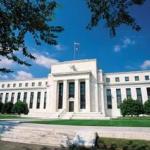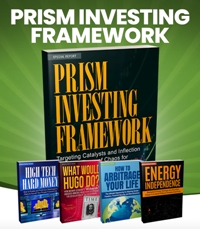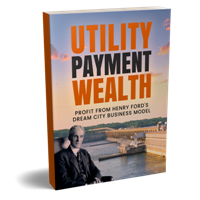 This week, Federal Reserve Chair Jerome Powell and the Federal Open Market Committee (FOMC) held the federal funds rate within the target range of 4.25 percent and 4.50 percent. Balancing the risks of higher inflation and higher unemployment, and the uncertainty of “which way this will shake out,” was Powell’s stated rationale for the decision.
This week, Federal Reserve Chair Jerome Powell and the Federal Open Market Committee (FOMC) held the federal funds rate within the target range of 4.25 percent and 4.50 percent. Balancing the risks of higher inflation and higher unemployment, and the uncertainty of “which way this will shake out,” was Powell’s stated rationale for the decision.
This made President Donald Trump grumpy. He wants Powell to cut interest rates. He wants lower borrowing costs to help cushion the fallout from his trade tariff policies. In advance of the FOMC meeting, Trump even called Powell mean names on Truth Social:
“There can be a SLOWING of the economy unless Mr. Too Late [Powell], a major loser, lowers interest rates, NOW.”
Lower interest rates would help Treasury Secretary Scott Bessent cover the $1.07 trillion in government debt that must be borrowed between April and September. Lower interest rates would also promote a weaker dollar, which would make American made goods more competitive in export markets. This would be consistent with Trump’s objective to bolster American manufacturing.
But what choice did Powell really have?
After Trump’s frequent, public lambasting of his performance and demands for rate cuts, if he’d cut the short-term interest rate, he would have appeared to be a Trump toady. Perhaps the decision to hold was made for the purpose of asserting the Fed’s independence from political influence.
Who knows?
Regardless, Trump didn’t get his rate cut. But he did get the perfect scapegoat he can use to deflect blame from his tariff policies when the economy grinds to a halt over the next several months.
The conflict between Trump and Powell isn’t the first time a U.S. President and a Fed Chair have locked horns.
Influence and Intimidation
The clash between President Lyndon B. Johnson and Federal Reserve Chairman William McChesney Martin Jr. in the mid-1960s was a classic case of political and monetary policy misalignment.
If you recall, Johnson’s Great Society and Vietnam War programs of guns and butter increased government spending. Before long all this excess spending was bubbling up in rising consumer price inflation.
Fed Chair Martin, concerned about the potential for runaway inflation, tightened monetary policy by raising interest rates. Johnson, however, wanted lower interest rates to boost the economy and finance his programs of welfare and warfare.
Johnson, a total control freak, didn’t like Martin’s restraints. So, he invited Martin to his Texas ranch to settle their differences.
There he intimidated Martin and physically pushed him around the room while demanding rate cuts. “Martin, my boys are dying in Vietnam, and you won’t print the money I need,” barked Johnson.
Martin initially resisted Johnson’s pressure. But eventually he gave in.
Several years later, when Johnson’s inflation had filtered through the economy, another conflict between the President and the Fed Chair went down. This time between President Richard Nixon and Federal Reserve Chairman Arthur Burns.
Nixon’s main objective in 1972 was getting reelected. He wanted lower interest rates to boost the economy, even in the face of rising consumer price inflation. Burns, while a personal friend of Nixon, was concerned about the long-term consequences of inflation.
Nixon repeatedly ranted at Burns and berated him with demands for lower interest rates. Burns folded like a card table and acquiesced prior to the election.
After Nixon was reelected, however, Burns moved to tighten monetary policy. But it was too little too late. The inflation cat was already let out of the bag where it ran wild through the end of the decade.
Malady of the Ignorant
Now a similar showdown between Trump and Powell is playing out. It is fun to watch. But do either of these guys really know what they’re doing?
“To be ignorant of one’s ignorance is the malady of the ignorant,” said Amos Bronson Alcott, sometime in the 19th century.
Alcott made this remark long before the Federal Reserve came into existence. Nonetheless, it’s likely he would have concluded the Federal Reserve’s objective of setting interest rates by edict is for those who suffer from the malady of the ignorant.
Trump, no doubt, has no clue what interest rates should be. Nor do we. Similarly, Powell and his army of technicians at the Federal Reserve don’t know either.
Yet, it’s Powell’s job to know precisely what interest rates should be. Moreover, he must dictate what rate of interest lenders should charge borrowers. He believes that by setting the ‘correct’ interest rate he can optimize the economy.
Specifically, by monkeying around with the supply of money and credit the Fed attempts to moderate the business cycle. The big idea behind it all is that the economy is something that can be scientifically managed. This premise is false.
The propensity of bureaucrats to believe they can improve an economy through central planning is what Friedrich Hayek called The Fatal Conceit. According to Hayek, economic decisions require price signals, in the form of the price charged for a good or commodity.
These price signals are what guide producers to increase or decrease supplies and consumers to increase or decrease demand. When these price signals are hindered through government intervention, economic distortions emerge.
Without price signals central planners are merely guessing.
Suffering the Fed’s Mistakes
Central planners, including central bankers, will never admit the futility of their ways. Again and again, they try to manage things that are beyond their control. They’re never able to get things just right. But they always succeed at making a mess of things.
For example, Soviet planners, armed with five-year plans, couldn’t determine the appropriate price of toothpaste or toilet seats, or what wages workers should be paid to produce them. Store shelves were chronically empty.
Likewise, government edicts cannot command the price of Peruvian bananas or rents on New York City apartments. Alternatively, when decisions are left to producers and consumers, supply gluts and demand crunches quickly equilibrate at their market determined price.
So, if Soviet central planners couldn’t figure out the price of toothpaste or toilet seats, why does the Federal Reserve believe it can fix interest rates?
The price of credit, of course, is the economy’s most fundamental element. Putting the ‘price fixing’ of credit in the hands of a committee of unelected bureaucrats is inviting disaster.
It is also important to understand that the Fed, through its twelve regional Federal Reserve Banks, serves the interests of privately-owned commercial banks. Efforts to enhance the economy for the benefit of the American people are secondary.
The proof is in the pudding. The Fed’s track record over many decades shows it’s unable to get interest rate policy right. In fact, over just the last 30 years Fed policies have orchestrated three massive boom and bust cycles.
Rather than allowing individual lenders and borrowers, guided by the market’s latest price signals, to freely come to terms on the rate of interest to be paid on a transaction-by-transaction basis, the Fed intervenes from its ivory towers.
Down here with the rest of us, we’re suffering its mistakes.
[Editor’s note: Have you ever heard of Henry Ford’s dream city of the South? Chances are you haven’t. That’s why I’ve recently published an important special report called, “Utility Payment Wealth – Profit from Henry Ford’s Dream City Business Model.” If discovering how this little-known aspect of American history can make you rich is of interest to you, then I encourage you to pick up a copy. It will cost you less than a penny.]
Sincerely,
MN Gordon
for Economic Prism





“What’s sweeter than proving the naysayers wrong? Doing it while boosting American workers. Tariffs have shielded jobs in steel, auto, and tech, all while keeping prices in check. That’s quite literally the opposite of the chaos that so many Dems predicted.
The left’s fear factory is running out of steam. Every dire warning — tariffs, deportations, tax cuts — was supposed to tank the economy. Yet here we are, with inflation tamed and growth holding steady.
Trump’s critics said he couldn’t thread the needle on trade. They said tariffs would backfire. They were wrong, and the data proves it. This is what winning looks like.
So, to the Democrats clutching their debunked talking points: It’s time to rethink your playbook. The American people see through the noise, and they’re cheering for policies that actually work.
This CPI report isn’t just a number; it’s a middle finger to the establishment’s doom-and-gloom. Trump just keeps on winning for the country, and the left’s narrative is in tatters.
Pass the popcorn, please.”
OUTLAW USURY! No more interest for anyone for anything, it’s underserved and unearned. We don’t need a banking business just a banking service. Make all loans 10%, no more interest and sooooooo much money will be left in the pockets of the people who actually earned it and almost ALL financial issues disappear. THE BANKING SYSTEM IS THE PROBLEM, it’s a debt based, predatory, reptilian based system dependent upon usury designed by banksters themselves!